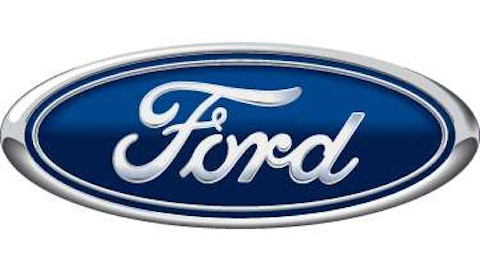The company began the bull market with sales of 215,000 cars and earnings of $13.3 million before taxes and interest (but an ultimate net loss of $45 million) for the 1921 fiscal year. In 1929, General Motors Company (NYSE:GM) reported net earnings of $248.3 million on sales of 1.9 million automobiles — a 765% increase in production that led to earnings growth of 1,750%. General Motors, if anything, deserved more share-price growth than it enjoyed during the Roaring ’20s.
The first tech bubble
Manufacturing was aided enormously by the electrification of the country, and electricity use more than doubled during this decade. In 1920, 35% of American homes were wired for electricity. By 1929, 68% of the nation’s homes were electrified, and these homes used 117 billion kilowatt-hours of electricity, up from just 52 billion kilowatt-hours a decade earlier.
The spread of electricity also enabled the spread of an incredible range of new electrically powered devices. Anyone familiar with a more recent “tech bubble” knows what came next: Interest in the next big thing quickly outpaced the corporate fundamentals of leading “technology” enterprises.
Radio was the hot new connective technology of the age, and like the Internet decades later, it also became the pre-eminent speculative investment of the 1920s. At the start of the bull market there were only five radio stations operating in the entire country, and the number of listeners likely numbered in the thousands. By the end of 1929 an astounding 606 stations were broadcasting across the country. Americans spent more than $840 million on radio equipment to listen in that year — 14 times the amount spent in 1922 — and the barely formed broadcast advertising industry spent $27 million to reach them.

“All these stations, and there’s nothing good on!”
Source: Library of Congress via Wikipedia.
Radio — or, more specifically, the Radio Corporation of America — was, in the words of John Kenneth Galbraith, “the speculative symbol of the time.” Often referred to in shorthand as simply “Radio” due to its dominant technological position, RCA began as an offshoot of General Electric Company (NYSE:GE) in 1919 following the seizure of key patents from foreign interests during World War I. At the beginning of the bull market, its stock traded at $1.63 — so far into penny-stock territory that it only traded on the curb exchange, and thinly at that: Only 500 shares of RCA sold on the first day of the bull market.
By the end of 1925, RCA was already valued at $42.25 per share. The company reported earnings of $2.8 million for that year, or $1.26 per share — good for a P/E of 33.5, which was well into bubble territory at a time when the larger industrial stocks traded at P/Es of about 10. By the peak of the bubble on Sept. 3, 1929, one share of RCA was worth $490.65. This was good enough for a P/E of 41.6 based on earnings of $11.80 per share for the 1928 fiscal year.
RCA, unlike many of its notable peers, did not pay any dividends during this time. Shareholders ought not have minded too much, as they earned a total return of 30,000% on RCA shares purchased at the start of the bull market.
General Electric Company (NYSE:GE) also participated in the boom. It stood at the heart of America’s electrical expansion, manufacturing both consumer gadgets and the turbines many utilities used to power the nation. It was also one of eight Dow components to remain on the index throughout the Roaring ’20s, and it was arguably the most closely watched of those components outside of U.S. Steel. At the start of the boom, General Electric Company (NYSE:GE)’s shares were worth $112 apiece, and the company would later report net income of $28.2 million for the 1921 fiscal year. In 1929 the company reported net income of $67.3 million, equal to $35.88 per share. Shares were worth $1,564 on Sept. 3, 1929, so General Electric Company (NYSE:GE) wound up with an even higher P/E than its spinoff despite posting total share-price growth (before dividends) of only 1,300% during the Roaring ’20s.





